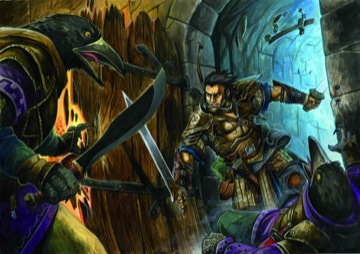Nobody Expects an Intro Set!
Thursday, September 30, 2010
This past Monday I spoiled on the Paizo Twitter feed that we're beginning the process of working on a Pathfinder intro set. Jason quickly retweeted it and it spread from there. So, what do we mean exactly when we say an intro set? First off we're not 100% sure of anything yet. What we do know is that it'll be useful for more than a couple of sessions, will be a great PFRPG teaching tool, and will help us get more people playing Pathfinder. It'll probably come in a box, it might have counters and/or tokens, probably a Flip-Mat or two, most likely cover a good range of levels, and have a handful of classes and a good collection of feats. Essentially it'll be everything you need to get people playing, and learning, the game. Because the more people playing, the more opportunity for gaming, and we can all do with more gaming right?
We're at the very beginning of this process and nothing is set in stone though. Getting some feedback would be really helpful, though, so what would you like to see in an introductory Pathfinder product?
Hyrum Savage
Marketing Manager
We have updated our Privacy Policy.
Paizo.com uses cookies. You can block paizo.com from using cookies within your browser settings, but doing so will hinder site functionality.
More information can be found in our Privacy Policy.
